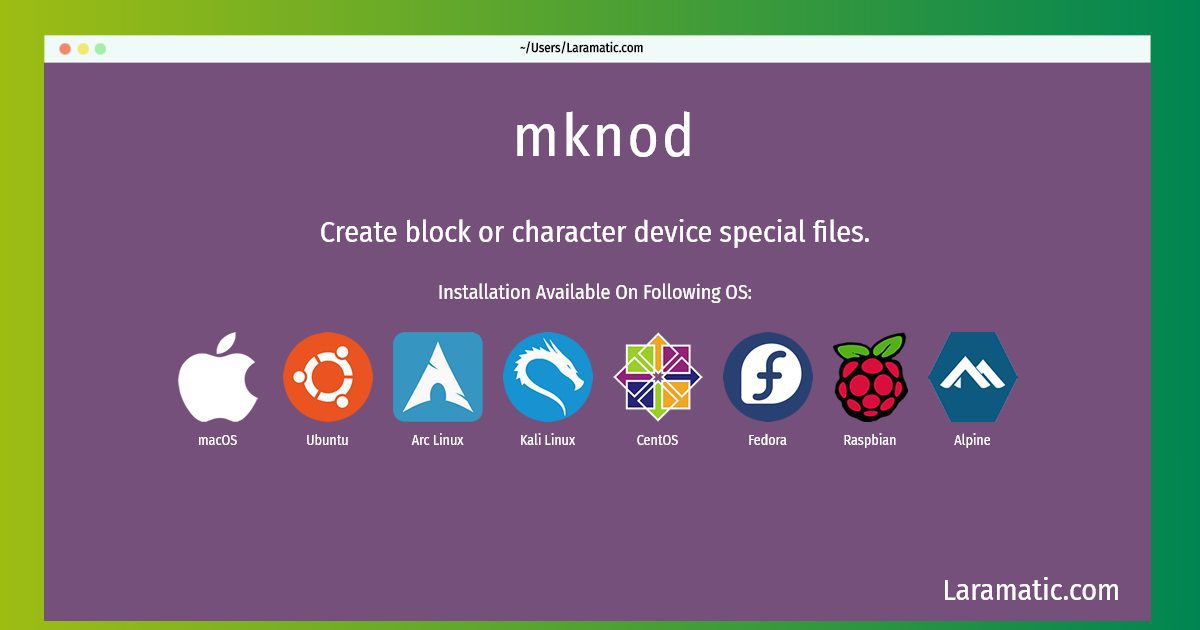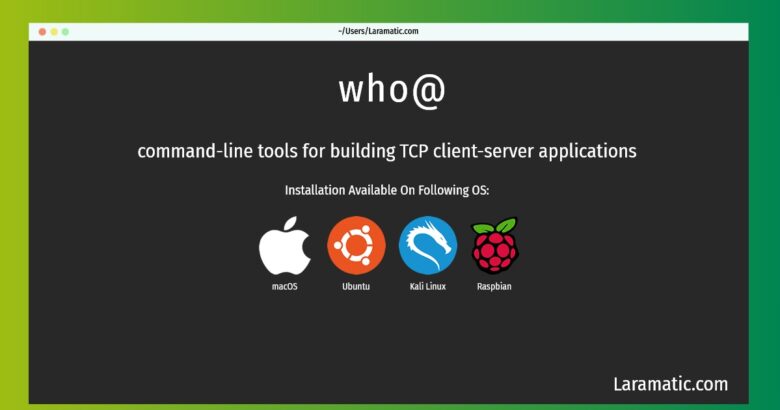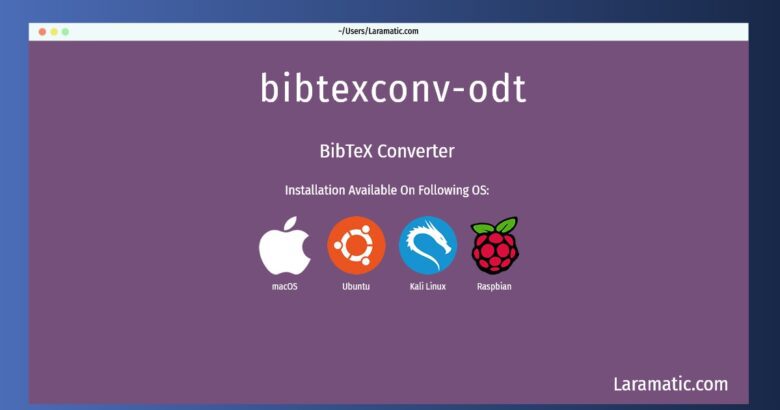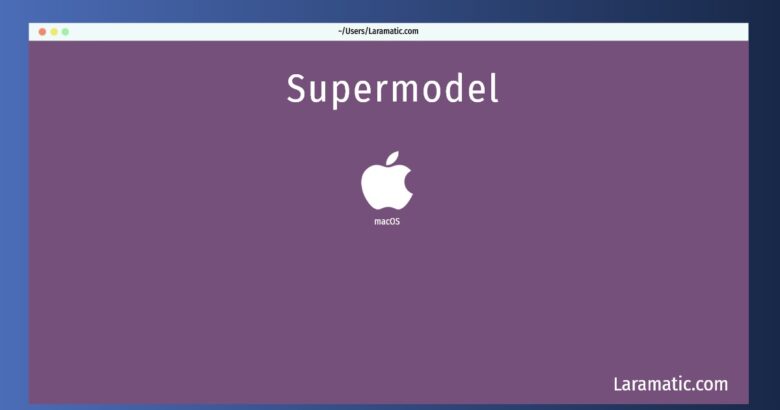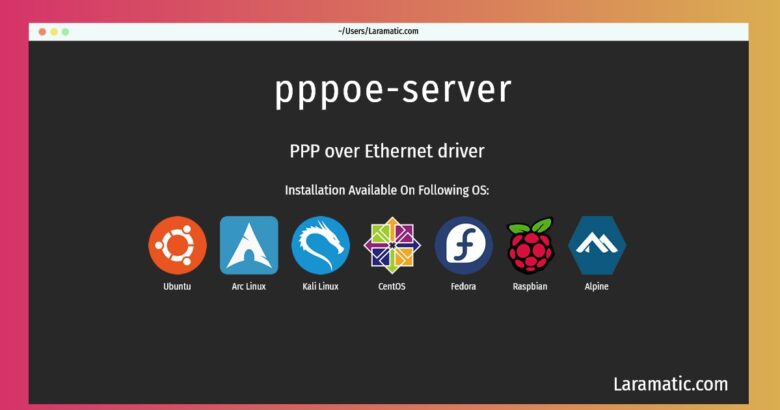How To Install Mknod In Debian, Ubuntu, Alpine, Arch, Kali, CentOS, Fedora, Raspbian And MacOS?
Maintainer: Michael Stone
Email: [email protected] .
Website: https://gnu.org/software/coreutils
Section: utils
Install mknod
-
Debian
apt-get install coreutilsClick to copy -
Ubuntu
apt-get install coreutilsClick to copy -
Alpine OS
apk add coreutilsClick to copy -
Arch Linux
pacman -S coreutilsClick to copy -
Kali Linux
apt-get install coreutilsClick to copy -
CentOS
yum install coreutilsClick to copy -
Fedora
dnf install coreutilsClick to copy -
Raspbian
apt-get install coreutilsClick to copy -
macOS
brew install coreutilsClick to copy
Create block or character device special files.
How to use mknod?
Below are few example commands for mknod that you can use in the terminal.
Create a block device:sudo mknod path/to/device_file b major_device_number minor_device_numberClick to copyCreate a character device:sudo mknod path/to/device_file c major_device_number minor_device_numberClick to copyCreate a FIFO (queue) device:sudo mknod path/to/device_file pClick to copyCreate a device file with default SELinux security context:sudo mknod -Z path/to/device_file type major_device_number minor_device_numberClick to copy
Installing mknod command is simple. just copy one of the above commands for your operating system and paste it into terminal. This command is available for Debian, Ubuntu, Alpine, Arch, Kali, CentOS, Fedora, Raspbian and macOS operating systems. Once you run the command it will install the latest version of mknod 2024 package in your OS.

